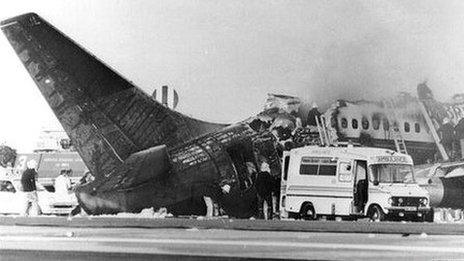Manchester Air Disaster remembered 40 years on
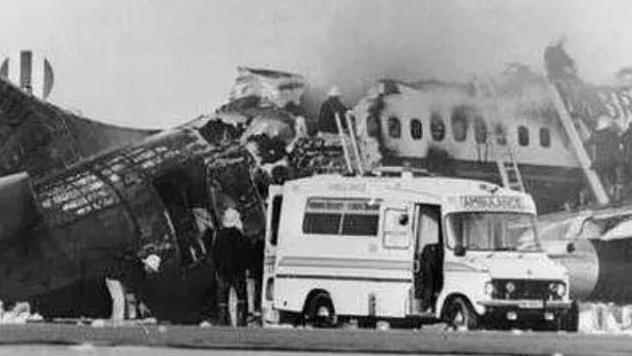
The Manchester Airport Disaster on 22 August 1985 claimed the lives of 55 people
- Published
A man who lost his 18-year-old daughter in the Manchester Air Disaster said he would never forget dropping her off at the airport exactly 40 years ago.
Fifty-three passengers and two crew members perished on 22 August 1985 after an engine on a British Airtours aeroplane caught fire on the runway. Most of the victims died of smoke inhalation.
William Beckett's daughter Sarah, from Sheffield, was one of the victims.
Now 79, he spent many years fighting for safety improvements following the disaster - including how to more efficiently evacuate planes in an emergency - that have since benefitted millions of air passengers around the world.

Sarah Beckett, 18, from Sheffield, was killed in the disaster
Sarah Beckett was on the ill-fated British Airtours flight to the Greek island of Corfu after she was offered a job as a nanny.
Her dad William said he would never forget saying goodbye.
"I drove her to the airport and checked her in, then bid her farewell thinking that she was safe," he said.
Later that day, he received a call to say that Sarah's plane had been in a terrible accident.
"I switched on the TV, saw the pictures and I knew she was sat at the back, so I thought 'My God - I don't know how she could've got out of that'."
Mr Beckett's friends then desperately began to phone hospitals in the area for any news.
He said: "It wasn't until one o'clock in the morning that there was a knock at the door and a police sergeant told us that our daughter was believed to have been killed."

William Beckett has campaigned for better aviation safety since losing his 18-year-old daughter Sarah in the disaster
An investigation found the disaster was caused by faulty welding in one of the aircraft's engines.
This led to an explosion as the plane was taking off.
The catastrophic engine failure led to a fire in the left wing.
As the pilot slowly taxied off the runway, flames were blown by the wind on to the fuselage.
As the plane slowly came to a halt, thick, black smoke began to appear inside the cabin.
The order was given to evacuate - but one of the exit doors at the front of the aircraft jammed, wasting valuable seconds.
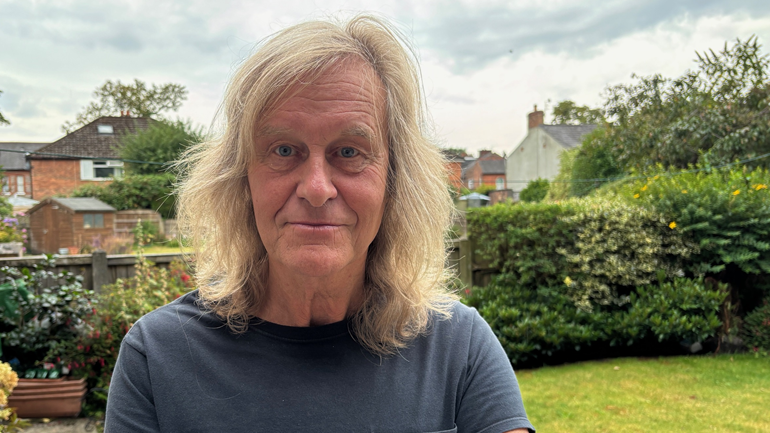
Charles Hickson survived the crash
As toxic fumes consumed the aircraft, desperate passengers battled to escape.
Many were impeded by the layout of the seats and the narrow width of the exits.
Some scrambled over seats in a fight for survival.
Charles Hickson was one of the 82 people on board who survived.
Now 68, he described what happened.
"Black smoke came into my face," he said. "I took a breath of it and I started to feel woozy.
"There was an air stewardess at the front of the plane, who told me to bend down and breath under the smoke, which I did, but there were precious few seconds."
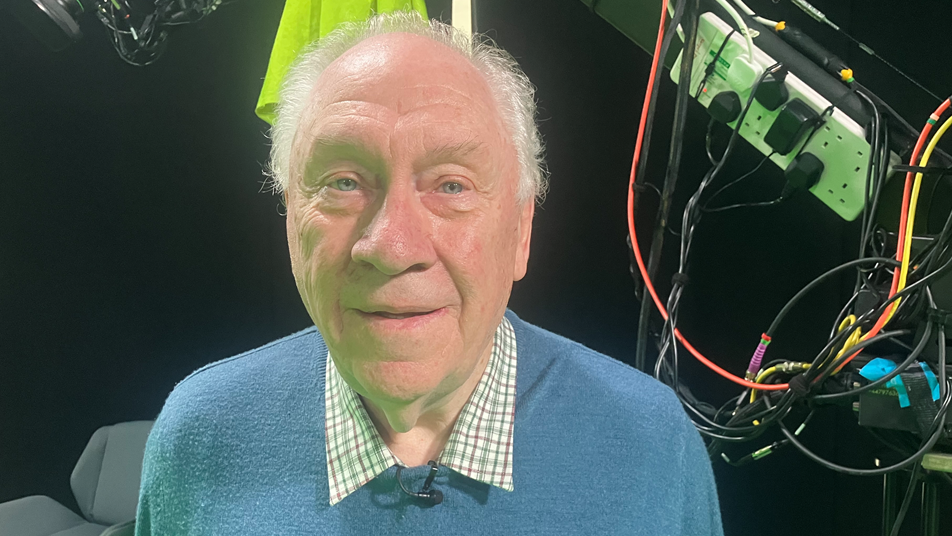
Roger Sheppard was in the first fire engine to arrive at the burning aircraft
Retired firefighter Roger Sheppard was on duty that day and was in the first fire engine to arrive at the scene.
"We heard a loud 'whump' noise and could see the aircraft coming down the runway with flames followed by a vast trail of smoke behind it," remembered the now 78-year-old.
"When we hit the engine with foam the flames went out very quickly but the tail of the aircraft gradually began to sag down and we realised the fire had got inside.
"We couldn't get inside the aircraft so I was helping get people off the wing."
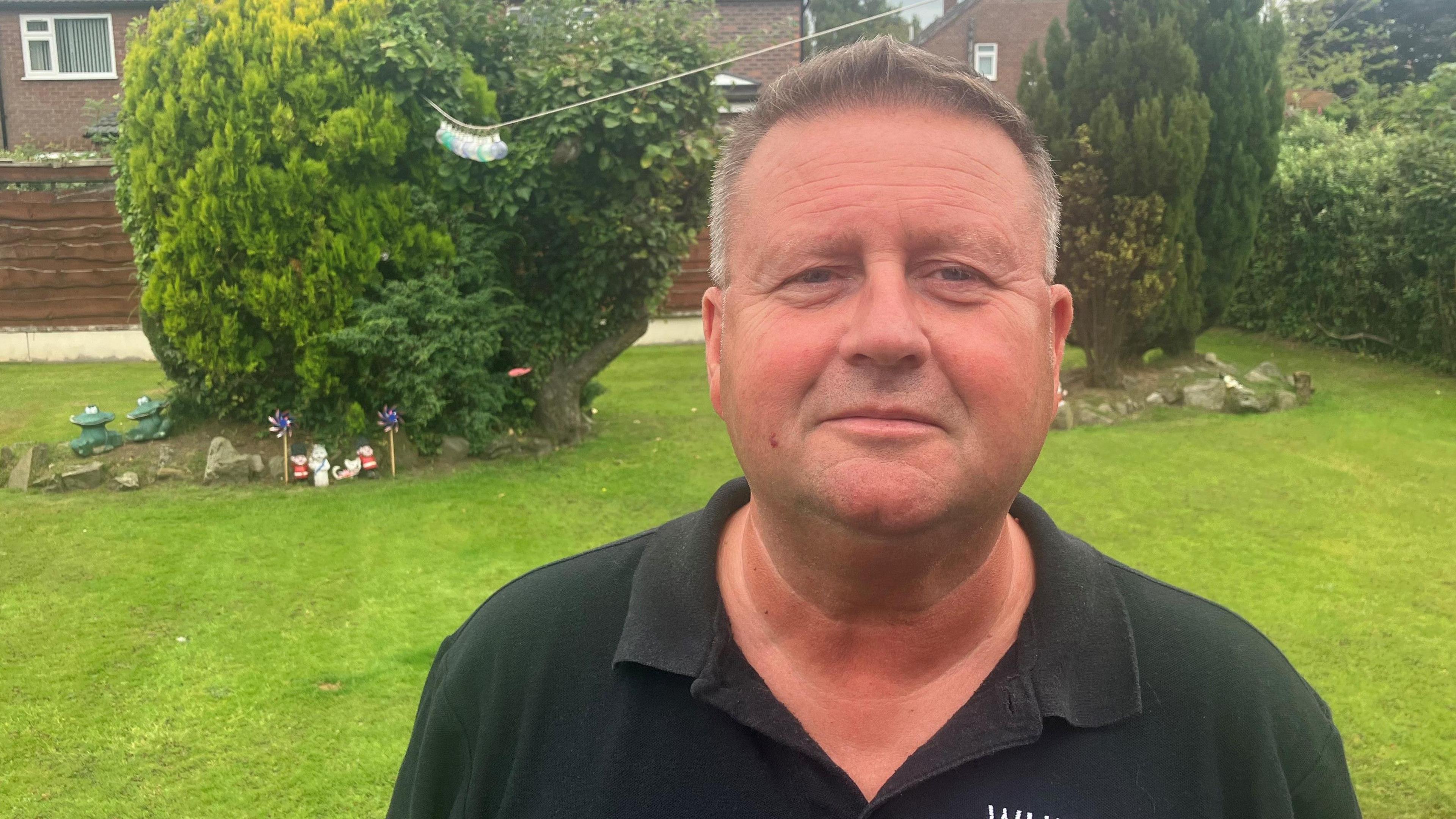
John Cunningham, 18 at the time, worked at Manchester Airport
John Cunningham, 18 at the time of the disaster, worked at Manchester Airport as a barman for Scandinavian Air Services.
"I was called in because I lived really close to the airport," he said.
"When I got there, I was told we would be providing refreshments for the people affected by the disaster.
"The plane was only 500 yards away. It was covered in foam, there was smoke, the firefighters were there and people were being taken into ambulances."
Now 58, Mr Cunningham said: "I didn't realise what I'd done until the 30th anniversary.
"A man who was pulled out of the plane came up me and thanked me for looking after his parents, so I was overwhelmed by that gratitude."

A memorial to the 55 Manchester Air Disaster victims was unveiled in 2018
The two surviving cabin crew members and two Manchester Airport firefighters were later awarded the Queen's Gallantry Medal for outstanding bravery.
The two flight attendants who died received the same award posthumously.
A private memorial service will take place later at Manchester Airport to mark the disaster's 40th anniversary and remember the 55 people who died.
Related topics
Related stories
- Published22 August 2018

- Published22 August 2015
